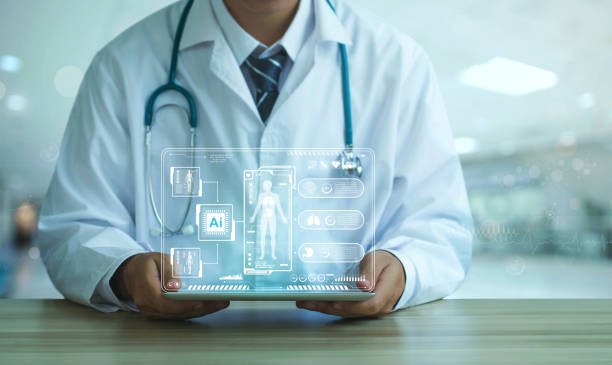Navigating the Evolution of Life Sciences Technologies
As we advance into the 21st century, the life sciences sector is experiencing a technological renaissance, propelling it into a future where innovation is encouraged and expected to sustain. Pioneering advancements within life sciences software are redefining the parameters of research and healthcare.
These sophisticated tools enable researchers to navigate and manage the vast ocean of data they encounter daily, ensuring decisions are made not on intuition alone but backed by solid, data-driven insights. Integration of such technology is no longer a luxury but a requisite for laboratories aiming to remain at the forefront of scientific discovery.
Key Takeaways:
- Understanding the significant role of software in revolutionizing life sciences research.
- Identifying how integrating specialized software can enhance laboratory efficiency and data management.
- Exploring the latest software trends and predictive analytics shaping the future of life sciences.
Comparing Traditional Methods to Software-Enhanced Practices
Reflecting on the past, the traditional methodologies employed in life sciences laboratories could be more convenient, time-consuming, and prone to error. In contrast, introducing digital resources and software solutions fosters a revolutionary change. They catalyze a transition from the paperwork-laden benches of the past to a modernized, interconnected digital ecosystem.
Software-enhanced practices breathe efficiency into the core of research — automating data collection, enabling complex computational analyses, and facilitating a more collaborative environment. This encourages a culture of precision and replicability in experiments, ultimately nurturing a higher standard of scientific research.
Software Tools That Empower Scientists and Researchers
Imagine a realm where mundane tasks are effectively automated and complex data sets are effortlessly analyzed — this is the power modern software tools confer upon today’s scientists and researchers. Contemporary laboratories are equipped with sophisticated software for meticulous data analysis and visualization, enabling discoveries at an unprecedented pace.
Laboratory Information Management Systems (LIMS) have emerged as the backbone of many research environments, organizing and precisely tracking samples, assays, and workflows. Artificial Intelligence (AI) integration extends even further, offering predictive models that can hypothesize outcomes, dissect intricate patterns, and give researchers an edge in their explorations.
Security and Compliance in Life Sciences Software
In the intricate tapestry of life sciences, the threads of security and compliance are woven essential. Life sciences software is increasingly required to meet stringent industry regulations, such as those imposed by the FDA’s 21 CFR Part 11 or the EU’s GDPR.
These digital systems are fortified with advanced encryption, role-based access controls, and comprehensive audit trails, ensuring that data is secure and managed in full compliance with regulatory standards.
Digital solutions offer a reliable means to safeguard intellectual property and patients’ confidential information, fostering trust and maintaining the integrity of the scientific process.
Adapting to the Digital Transformation in Life Sciences
The path of digital transformation has its challenges. Resistance to change and the complexities inherent in new software systems can present significant barriers to successful implementation. However, a strategic approach can dismantle these barriers. Empowering personnel with the right training and fostering a culture of continuous innovation can catalyze the adoption of such advancements.
When a lab positions itself to embrace change, its operation can transcend traditional limitations, harnessing the full potential of digital transformation to unlock immense efficiency and effectiveness in research.
The Future of Lab Work: Predictive Analytics and Beyond
Peering into the future of life sciences reveals an exciting landscape with cutting-edge advancements. Predictive analytics stands at the forefront of this evolution, offering a window into future trends and ensuring laboratories stay ahead of the curve.
The adoption of blockchain technology is poised to revolutionize data management, providing security and traceability that was once fantastical. As these innovations permeate the life sciences fabric, they promise to elevate the sector to new heights, making the work of researchers more manageable and impactful.
Choosing the Right Software for Your Life Sciences Lab
Determining the optimal software for a laboratory’s specific needs can be daunting. The plethora of options available makes it essential to scrutinize criteria such as ease of use, scalability, and compatibility with existing systems.
The best software solutions are those that not only feature a robust set of tools geared toward the life sciences but also align with the lab’s current practices while leaving room for growth. In this intricate selection process, decision-makers must consider the lab’s long-term objectives, ensuring that the chosen software will serve as a stout ally in their ongoing quest for knowledge and innovation.
Building a Collaborative Ecosystem with Integrated Software
The future beckons for a more interconnected and collaborative research environment. Through integrated software, laboratories can surmount the barriers of geographical distance, enabling seamless collaboration and data-sharing across institutions.
Such ecosystems enable labs to compile collective intelligence, enhance reproducibility, and accelerate the pace of discovery. The case studies highlighting the successful integration of multisite research projects into a cohesive, collaborative environment are a testament to the power of interoperability and unified platforms in modern research.
Training and Support: Maximizing the Adoption of New Software in Labs
Deploying new software is the first step in a lab’s digital journey. Comprehensive training programs and responsive support systems fuel the uptake and effective use of these tools. Personnel proficient in software utilization can maximize the available features, streamline workflows, and minimize potential downtimes due to technical difficulties. Investing in training is an investment in a lab’s future proficiency and efficiency, ensuring that the benefits of software innovation extend throughout the organization.
In the dynamic sphere of life sciences, staying informed about the latest trends is imperative. Interested individuals can lean into resources which elucidate the profound impact of software on research efficiency.

